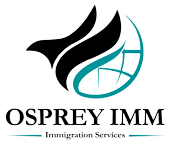Labour Market Impact Assessments (LMIA) formerly LMOs
Working in Canada is an attractive option for many skilled foreign workers from all over the world. Each year, close to 200,000 foreign skilled workers come to work in Canada on Temporary Canadian Work Permits. There is no reason why this cannot be you too!
In order to work in Canada on a temporary basis, foreign skilled workers must have a temporary offer of employment from a Canadian employer and be granted a Temporary Foreign Worker Permit by Human Resources and Skills Development Canada. If you or a family member are applying for a PR card, you can also apply via an ‘Open Work’ permit, and if you are American or Mexican.
If you are looking for a job, certain positions in Canada may require a person to know their National Occupation Classification Code (NOC Code). This code is used to classify all types of employment by Canadian standards.
Before applying for a temporary Canadian Work Visa, in most cases, you need to qualify for a Labour Market Impact Assessment (LMIAs) previously called an LMO from Service Canada. A temporary tourist visa will not provide eligibility to work within Canada

What is the difference between LMOs and LMIAs?
The procedure involved in obtaining an LMIA is similar to LMOs, but there are significant differences.:
High Wage Positions
The application forms have changed from the old LMOs and are more extensive
Employers must complete a ‘transition plan’ that will explain how they intend to permanently fill the job being held by the temporary foreign worker.
Employers are required to keep more detailed records during the foreign worker’s stay in Canada.
Individual applications will be processed more quickly.
Foreign workers in skilled trades, high paid workers with salaries in the top 10% of Canadian earnings, and employees immigrating for 120 days or less will all receive LMIA decisions in 10 business days.
For Low-Wage LMIAs
The procedures and criteria involved for Low-Wage LMIAs are somewhat different than for High-Wage LMIAs. More restrictions are imposed on Low-Wage job offers than are high wage as follows:
Positive LMIAs for low-wage jobs will now allow employers to hire a foreign worker for only one year at a time.
For organizations with more than ten employees, low-wage foreign workers can make up no more than 10% of the workforce.
Transitional measures will apply to employers whose work forces do not comply with this rule.
Canadian companies in the accommodation and food service sector as well as the retail trade sector will no longer be allowed to apply for LMIAs for jobs in ten lower-skill occupations.
As with high-wage LMIA applications, Canadian companies must now qualify with a higher application fee, complete longer application forms, and keep detailed records about their recruitment practices.
Who does not need to apply for an LMIA?
As in the case of the old LMOs, Canadian employers can recruit some TFWs without an LMIA. The following are categories where temporary work permits are LMIA exempt:
- Skilled Workers covered under the NAFTA agreement;
- Intra-Company Transferees;
- International Experience Canada participants (also known as Working Holiday Permit holders);
- Post-Graduate temporary work permit holders;
- Bridging Open Work Permit holders; and
- Participants in private academic exchanges such as postdoctoral fellows and visiting professors.
- Programs such as those above have now been reclassified as ‘International Mobility Programs.’
Also, beginning in summer 2015 employers hiring through some International Mobility Programs must have their job offers approved by a Canadian visa office before their hired employees can request a Canadian temporary work permit. The processing fee for the job offer approval application will be $230.
Step 2: Employer Extends Temporary Job Offer
The employer must send a copy of the positive LMIA along with a detailed ‘job offer letter’ to the foreign skilled worker.
Canadian companies are required by CIC to prepare a formal employment contract or what our industry refers to as the ‘Job Offer Letter,’ which must include:
- Job title for the position
- Job description
- Requirements for the temporary position
- Details about start and end dates
- Specifics about the salary
- The name and address of the employer
Canada Service Agency will ensure that the job offer is legit and real. Once the Canadian immigration department has confirmed the job offer with an LMIA, then the CIC will grant employment authorization for the company’s future employees to work in Canada. Once the LMIA is granted, the Canadian employer can extend a temporary job offer to the foreign skilled worker.
Step 3: Foreign Skilled Worker Applies For a Work Permit
Once you have your LMIA and ‘Job Offer Letter’ squared away, you then can apply for a Canadian Temporary Work Permit. If the employer that is hiring you is in the province of Quebec, then you may also need to obtain a Certificat d’acceptation du Québec (CAQ)in order to work temporarily in Quebec. In some cases, when applying for a temporary foreign worker permit, you will be required to attend an interview with a visa officer. If the visa officer is satisfied that the foreign worker’s employment will not adversely affect employment in Canada for Canadians and that the foreign worker qualifies for the position, then a Canada Work Permit will be issued.
Note: In some cases, applicants from certain countries will be required to undergo medical examinations.
Step 4. Get Issued a Canadian Temporary Work Permit
A Canada Border Services Agency (CBSA) officer will issue the Canadian Temporary Work Permit at the point of entry when the skilled foreign worker arrives in Canada. Depending on the foreign worker’s country of citizenship, a Temporary Resident Visa (TRV) may also need to be obtained in order to enter Canada. There are a few more minor steps and processes to obtaining a work visa.
Note: If a certain position of your job is at the NOC 0 (managerial, executive) or NOC A (professional) level, you may be eligible for two-week application processing.

'Open Work Permits' for PR Applicants
As of December 15, 2012, Citizenship and Immigration Canada announced that they would be allowing permanent resident applicants to obtain work permits while they are awaiting the finalization of their application. This will allow permanent resident applicants to now work while they are awaiting the answer on their application!
Work Visas for Business and Corporations
If you are interested in sending your employees to Canada, you should look into applying for the Intra-Company Transfer ICT Canada Visa. Applying for an Intra-Company Transfer visa allows the company and employee to avoid applying for an LMIA since this is an LMIA-exempt work permit.
Book a consultation to discuss an Intra-Company Transfer.
Who is Eligible for the Bridging Work Permit?
- Federal Skilled Worker Applicants
- Canadian Experience Class Applicants
- Federal Skilled Trades Program Applicants
- Provincial Nominees
What are the Requirements for the Work Permit?
In order to be eligible, you must fall into one of the above categories, and you must also meet the following criteria:
- You are currently in Canada
- You have a valid temporary Work Permit, and it is set to expire within four months.
- You have received a positive decision on your permanent resident application under an economic class, Federal Skilled Worker, Canadian Experience Class, or the Federal Skilled Trades Program.
- You have made an application for an Open Work Permit.
This ‘open work permit’ is a significant program in Canadian immigration and allows applicants to work during the processing of their PR applications.
Electronic Travel Authorization Form Required
Visa-exempt foreign nationals who fly to or transit through Canada need an Electronic Travel Authorization (eTA). Exceptions include U.S. citizens and travelers with a valid Canadian visa. Canadian citizens, including dual citizens, and Canadian permanent residents cannot apply for an eTA.
Important: If you are stateless or if you are traveling with a travel document issued to non-citizens, such as a foreign passport or a refugee travel document, you need to apply for a visa to visit or transit through Canada.
Canadian Family Visas
There are alternative ways to make sure that family members that wish to be together can migrate together. Some family members such as spouses and/or dependent children can be included during the initial Canada work visa application for new immigrants to Canada. Other family members such as grandparents must be sponsored by Canadian citizens and permanent residents. Under the Express Entry program, dependent family members of the work visa applicant are also granted permanent residence in Canada. They can enjoy all the same rights to live, work, and study in the country. The Express Entry program helps connect family members of the recipients of Canadian work visas with the rest of country.
Working in Canada While on a Student Visa
Since June 2014, those who are holding Canadian Study Permits who meet the eligibility criteria are allowed to work on or off the campus without the need for a separate work permit. The eligibility criteria to be able to work up to 20 hours a week are:
- Must have a valid Canadian Study Permit
- Must be a full-time student
- Must be studying at an authorized designed organization in Canada. These organizations include Canadian universities, community colleges, college d’enseignement general et professionnel (CEGEP), publicly funded trade or technical school, or a private institution authorized by provincial statute to confer degrees.
- Must be studying at a post-secondary level in Canada, or;
- Must be studying towards a secondary level vocational qualifications, or a post-secondary level qualification in Quebec
- Must be studying on a program that awards a degree, diploma or certificate
- Must be studying on a program that lasts for at least 6 months

Working in Canada While Visiting
Many people come to Canada as a tourist and then come across a job opportunity. People may wonder if you can work while on a visitor visa. The answer is, not really. You can not make money in Canada and from Canada if you are on a tourist visa! There are two different Canadian Visitor Visas: Single Entry and Multiple Entry.

